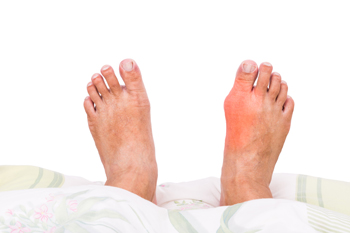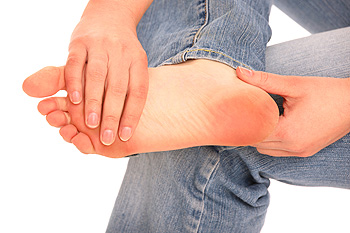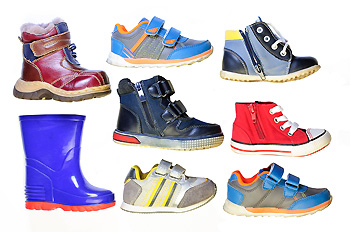Items filtered by date: December 2020
Athlete's Foot and the Skin
Athlete’s foot is a contagious infection of the skin of the feet. It is caused by a fungus that thrives in warm and moist environments. Athlete’s foot typically affects the toes, the areas between the toes, and the soles of the feet. Symptoms of this condition include itching, burning, peeling, and flaking skin on the foot. In severe cases, the skin may blister or the foot may have thick patches of dry, red skin on it. In extreme cases, the skin may crack and bleed, causing significant pain. Athlete’s foot can be treated by maintaining proper foot hygiene and using anti-fungal creams, powders, sprays, or oral medications. If you have athlete’s foot, it is suggested that you visit a podiatrist for treatment.
Athlete’s foot is an inconvenient condition that can be easily reduced with the proper treatment. If you have any concerns about your feet and ankles, contact one of our podiatrists from Sayville Foot Care. Our doctors will treat your foot and ankle needs.
Athlete’s Foot: The Sole Story
Athlete's foot, also known as tinea pedis, can be an extremely contagious foot infection. It is commonly contracted in public changing areas and bathrooms, dormitory style living quarters, around locker rooms and public swimming pools, or anywhere your feet often come into contact with other people.
Solutions to Combat Athlete’s Foot
- Hydrate your feet by using lotion
- Exfoliate
- Buff off nails
- Use of anti-fungal products
- Examine your feet and visit your doctor if any suspicious blisters or cuts develop
Athlete’s foot can cause many irritating symptoms such as dry and flaking skin, itching, and redness. Some more severe symptoms can include bleeding and cracked skin, intense itching and burning, and even pain when walking. In the worst cases, Athlete’s foot can cause blistering as well. Speak to your podiatrist for a better understanding of the different causes of Athlete’s foot, as well as help in determining which treatment options are best for you.
If you have any questions please feel free to contact our office located in Sayville, NY . We offer the newest diagnostic and treatment technologies for all your foot and ankle needs.
Common Reasons Why Bunions May Occur
 The joint that is affected by a bunion is located on the side of the big toe. A bunion appears as a large, bony protrusion, and it can occur for different reasons. These can consist of genetic factors, or from wearing shoes that do not have adequate room for the toes to move freely in. Common symptoms that are typically associated with bunions can include swelling, redness, and toe pain. Many patients notice that there are corns and calluses that form on top of the bunion. This can be a result of excess friction that is caused by shoes rubbing against the bunion. It is beneficial to wear larger shoes that can accommodate the bunion, as this may provide mild relief. If you notice an abnormal bump on your big toe, please consult with a podiatrist who can properly diagnose this ailment and offer you treatment options.
The joint that is affected by a bunion is located on the side of the big toe. A bunion appears as a large, bony protrusion, and it can occur for different reasons. These can consist of genetic factors, or from wearing shoes that do not have adequate room for the toes to move freely in. Common symptoms that are typically associated with bunions can include swelling, redness, and toe pain. Many patients notice that there are corns and calluses that form on top of the bunion. This can be a result of excess friction that is caused by shoes rubbing against the bunion. It is beneficial to wear larger shoes that can accommodate the bunion, as this may provide mild relief. If you notice an abnormal bump on your big toe, please consult with a podiatrist who can properly diagnose this ailment and offer you treatment options.
If you are suffering from bunions, contact one of our podiatrists of Sayville Foot Care. Our doctors can provide the care you need to keep you pain-free and on your feet.
What Is a Bunion?
A bunion is formed of swollen tissue or an enlargement of boney growth, usually located at the base joint of the toe that connects to the foot. The swelling occurs due to the bones in the big toe shifting inward, which impacts the other toes of the foot. This causes the area around the base of the big toe to become inflamed and painful.
Why Do Bunions Form?
Genetics – Susceptibility to bunions are often hereditary
Stress on the feet – Poorly fitted and uncomfortable footwear that places stress on feet, such as heels, can worsen existing bunions
How Are Bunions Diagnosed?
Doctors often perform two tests – blood tests and x-rays – when trying to diagnose bunions, especially in the early stages of development. Blood tests help determine if the foot pain is being caused by something else, such as arthritis, while x-rays provide a clear picture of your bone structure to your doctor.
How Are Bunions Treated?
- Refrain from wearing heels or similar shoes that cause discomfort
- Select wider shoes that can provide more comfort and reduce pain
- Anti-inflammatory and pain management drugs
- Orthotics or foot inserts
- Surgery
If you have any questions, please feel free to contact our office located in Sayville, NY . We offer the newest diagnostic and treatment technologies for all your foot care needs.
How Quickly Do Children’s Feet Grow?
Children’s feet grow much faster than an adult’s. Because of this, children often outgrow their shoes. On average, children between the ages of 1 and 3 will need new shoes two to three times per year. Children between the ages of 3 and 10 will typically need new shoes one to two times per year. However, every child’s rate of growth is unique. It is important to keep an eye on the fit of your child’s shoes, as wearing shoes that are too small or too large can cause various foot problems to develop. For more information on how to choose the right shoes for your child and how to help children maintain the health of their feet, it is suggested that you consult with a podiatrist.
Making sure that your children maintain good foot health is very important as they grow. If you have any questions, contact one of our podiatrists of Sayville Foot Care. Our doctors can provide the care you need to keep you pain-free and on your feet.
Keeping Children's Feet Healthy
Having healthy feet during childhood can help prevent medical problems later in life, namely in the back and legs. As children grow, their feet require different types of care. Here are some things to consider...
Although babies do not walk yet, it is still very important to take care of their feet.
Avoid putting tight shoes or socks on his or her feet.
Allow the baby to stretch and kick his or her feet to feel comfortable.
As a toddler, kids are now on the move and begin to develop differently. At this age, toddlers are getting a feel for walking, so don’t be alarmed if your toddler is unsteady or ‘walks funny’.
As your child gets older, it is important to teach them how to take care of their feet.
Show them proper hygiene to prevent infections such as fungus.
Be watchful for any pain or injury.
Have all injuries checked by a doctor as soon as possible.
Comfortable, protective shoes should always be worn, especially at play.
If you have any questions please feel free to contact our office located in Sayville, NY . We offer the newest diagnostic and treatment technologies for all your foot and ankle needs.
Morton’s Neuroma and Location of Pain
 The foot condition that is known as Morton’s neuroma may also be referred to as Morton's syndrome. It is defined as a compressed nerve, and the pain that is felt is generally located between the third and fourth toes. Pain may also consist of a tingling sensation, similar to pins and needles, or numbness on the inside of the two toes. This condition can be caused from wearing shoes that do not fit correctly, or from participating in running and jumping activities. The healing process can bring mild relief, and this includes resting the affected foot as often as possible. It may be beneficial to wear protective pads inside the shoes as they can provide adequate support. If you have developed pain in this area of your foot it is suggested that you schedule an appointment with a podiatrist who can properly diagnose and treat Morton’s neuroma.
The foot condition that is known as Morton’s neuroma may also be referred to as Morton's syndrome. It is defined as a compressed nerve, and the pain that is felt is generally located between the third and fourth toes. Pain may also consist of a tingling sensation, similar to pins and needles, or numbness on the inside of the two toes. This condition can be caused from wearing shoes that do not fit correctly, or from participating in running and jumping activities. The healing process can bring mild relief, and this includes resting the affected foot as often as possible. It may be beneficial to wear protective pads inside the shoes as they can provide adequate support. If you have developed pain in this area of your foot it is suggested that you schedule an appointment with a podiatrist who can properly diagnose and treat Morton’s neuroma.
Morton’s neuroma is a very uncomfortable condition to live with. If you think you have Morton’s neuroma, contact one of our podiatrists of Sayville Foot Care. Our doctors will attend to all of your foot care needs and answer any of your related questions.
Morton’s Neuroma
Morton's neuroma is a painful foot condition that commonly affects the areas between the second and third or third and fourth toe, although other areas of the foot are also susceptible. Morton’s neuroma is caused by an inflamed nerve in the foot that is being squeezed and aggravated by surrounding bones.
What Increases the Chances of Having Morton’s Neuroma?
- Ill-fitting high heels or shoes that add pressure to the toe or foot
- Jogging, running or any sport that involves constant impact to the foot
- Flat feet, bunions, and any other foot deformities
Morton’s neuroma is a very treatable condition. Orthotics and shoe inserts can often be used to alleviate the pain on the forefront of the feet. In more severe cases, corticosteroids can also be prescribed. In order to figure out the best treatment for your neuroma, it’s recommended to seek the care of a podiatrist who can diagnose your condition and provide different treatment options.
If you have any questions, please feel free to contact our office located in Sayville, NY . We offer the newest diagnostic and treatment technologies for all your foot care needs.



